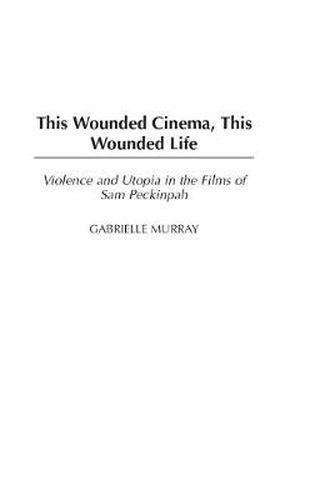Readings Newsletter
Become a Readings Member to make your shopping experience even easier.
Sign in or sign up for free!
You’re not far away from qualifying for FREE standard shipping within Australia
You’ve qualified for FREE standard shipping within Australia
The cart is loading…






Film scholarship has largely failed to address the complex and paradoxical nature of the films of Sam Peckinpah, focusing primarily on the violence of movies such as The Wild Bunch and Straw Dogs while ignoring the poetry and gentility of lesser-known pictures including The Ballad of Cable Hogue and Junior Bonner. Serving as a necessary corrective, Gabrielle Murray’s This Wounded Cinema, This Wounded Life: Violence and Utopia in the Films of Sam Peckinpah offers a better understanding of the work of this landmark director through close readings of both his famous and less-famous works.
Placing them in their proper context-both aesthetically and mythologically-Murray eschews the usual debates about screen violence to discover the ways in which Peckinpah’s films provide intense, kinetic explorations of life and death. Amid the often-discussed bloodshed, this bold new study comes to find the complicated utopian impulse that exists at the heart of even Peckinpah’s most violent work.
$9.00 standard shipping within Australia
FREE standard shipping within Australia for orders over $100.00
Express & International shipping calculated at checkout
Film scholarship has largely failed to address the complex and paradoxical nature of the films of Sam Peckinpah, focusing primarily on the violence of movies such as The Wild Bunch and Straw Dogs while ignoring the poetry and gentility of lesser-known pictures including The Ballad of Cable Hogue and Junior Bonner. Serving as a necessary corrective, Gabrielle Murray’s This Wounded Cinema, This Wounded Life: Violence and Utopia in the Films of Sam Peckinpah offers a better understanding of the work of this landmark director through close readings of both his famous and less-famous works.
Placing them in their proper context-both aesthetically and mythologically-Murray eschews the usual debates about screen violence to discover the ways in which Peckinpah’s films provide intense, kinetic explorations of life and death. Amid the often-discussed bloodshed, this bold new study comes to find the complicated utopian impulse that exists at the heart of even Peckinpah’s most violent work.